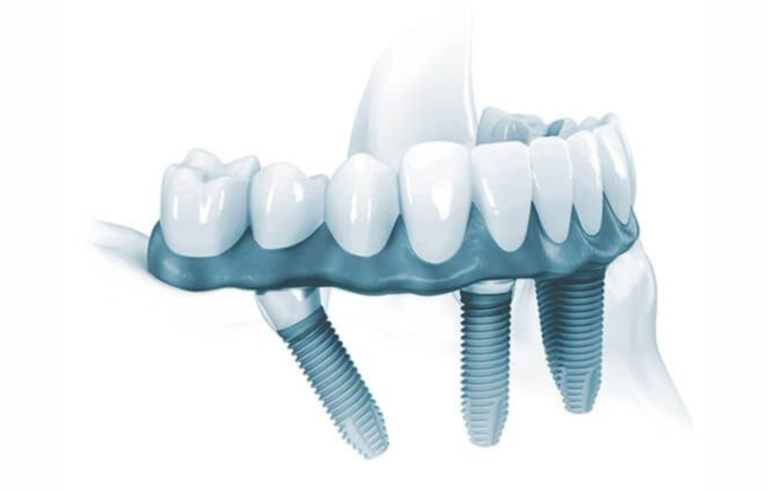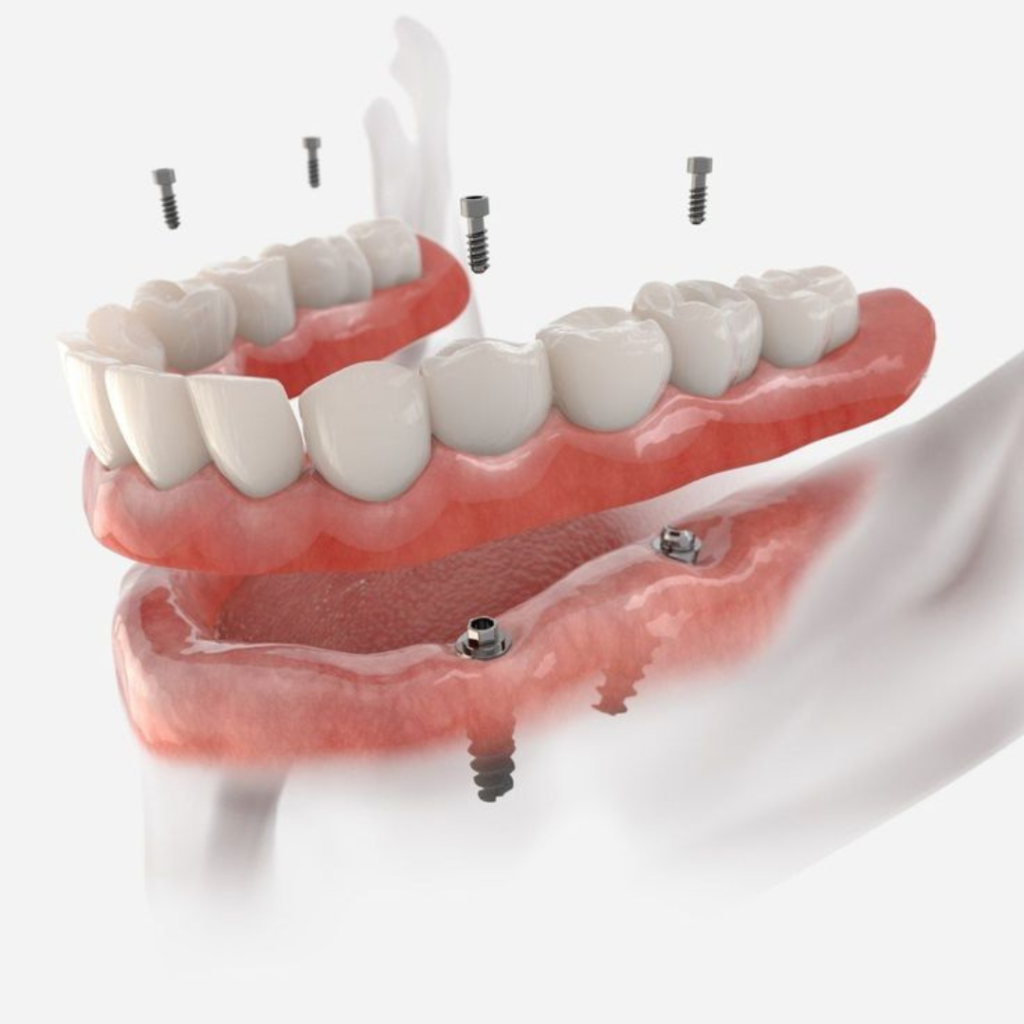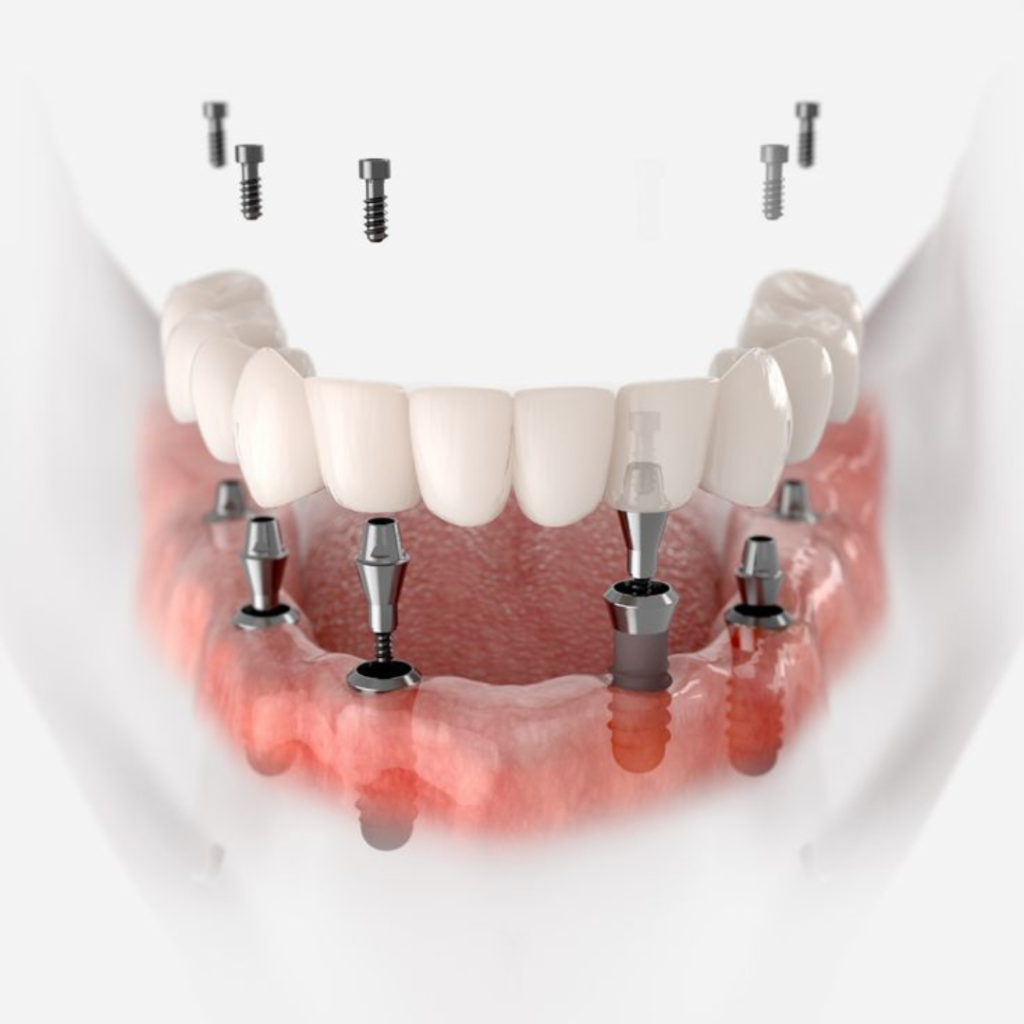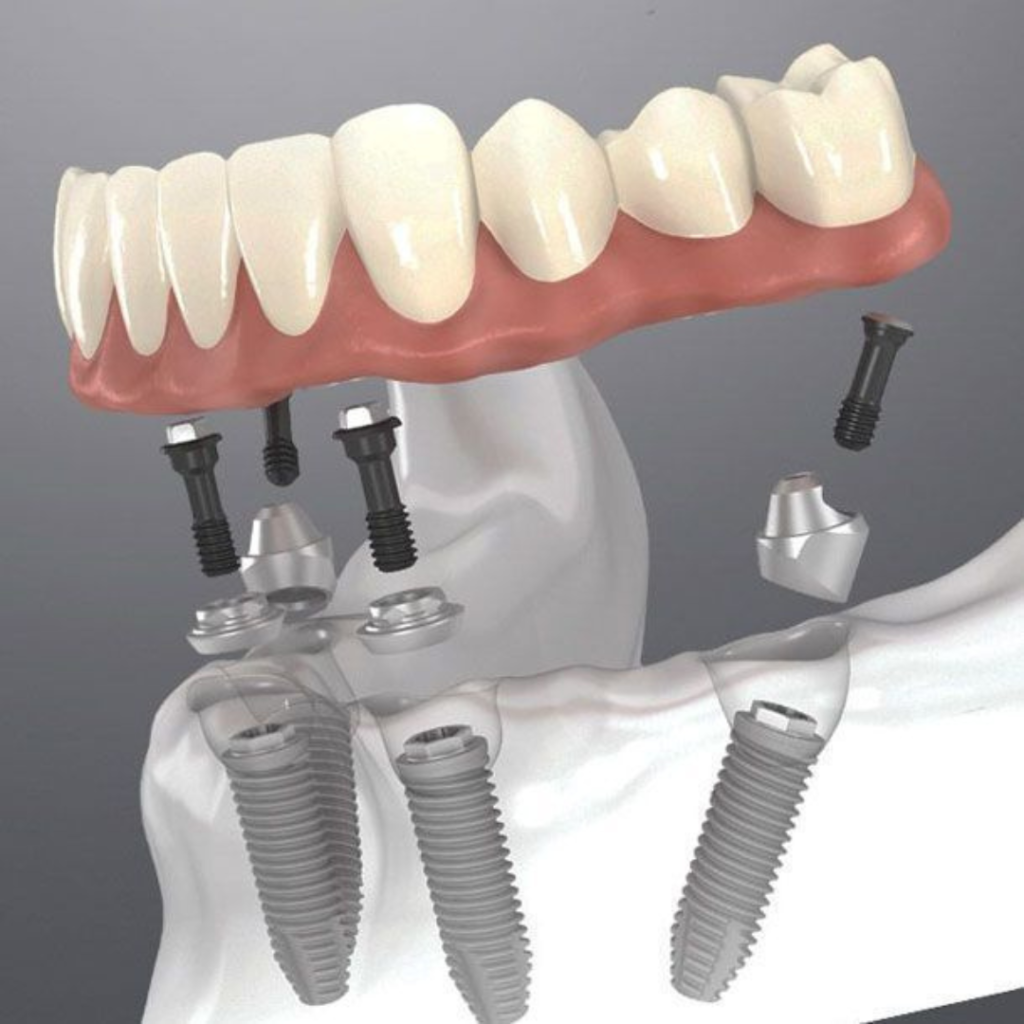
All-on-4 dental implants are ideal solutions for patients with a full arch of missing teeth. Generally, a dental implant, which resembles a screw, is surgically placed into the jawbone and acts as a root for a missing tooth. The artificial or prosthetic tooth is placed on this implant. In All-on-4 dental implants, only 4 dental implants are used for each side, thus reducing the need for multiple implants.
When it comes to prosthetic teeth for All-on-4 dental implants, the primary materials used are Zirconia, PMMA, and acrylic. The choice of material mainly depends on durability, aesthetics, compatibility with the patient’s body, and cost. Let us explore the pros and cons of these commonly used materials: Zirconia, PMMA, and acrylic.
Acrylic: Acrylic has been used in dental procedures since the 1940s. The acrylic prosthetic is created by filling the wax mould of customized teeth with resin.
Pros:
• Generally, acrylic is well-suited to the body and does not cause adverse reactions.
• It can mimic the appearance of natural teeth.
• When considering zirconia vs acrylic implants, acrylic is cheaper.
Cons:
• Can wear down over time, leading to chipping, cracking, and discoloration.
• Might need replacement or significant repairs after 5 to 8 years.
PMMA: Poly(methyl methacrylate) (PMMA) is a synthetic polymer derived from methyl methacrylate. It is a transparent thermoplastic, which is generally used as an alternative to glass. PMMA has been widely used since the 1940s. Currently, CAD and CAM technology is used to manufacture PMMA-based prosthetic teeth. First designed using software, they are then carved by a milling machine. PMMA is not strong on its own, but if it is strengthened with a metal bar, it becomes strong.
Pros:
• Carved from a solid block of PMMA.
• Wears down more slowly compared to acrylic implants.
• Can be easily refurbished and fitted into the old bar, as the design is stored on the computer while manufacturing.
Cons:
• Can cause allergic reactions in some individuals.
• More expensive compared to acrylic.
Zirconia: The use of Zirconia became popular in the late 20th century. Zirconia prostheses should be strengthened with metal bars to improve strength and durability. It is fabricated using CAD/CAM milling machines. The technician digitally designs the implant, and the milling machine precisely carves the material into the desired shape.
Pros:
• Can be easily refurbished as they are designed using computer software.
• It is very strong and durable compared to other materials when it is strengthened with a metal bar.
• When considering acrylic vs zirconia dental implants, zirconia has a lifespan of 10-15 years more with proper maintenance.
• Highly biocompatible.
Cons:
• Cheap-quality Zirconia can be abrasive.
• Generally more expensive than other options.
• Proper shaping is essential; otherwise, it can lead to premature wear as it places stress on opposing teeth.
Conclusion
Zirconia is one of the most biocompatible solutions. When considering PMMA vs acrylic, acrylic can cause inflammation in the gums. Though it is important to consider the material of the prosthetic teeth, it is generally not as important as the design of the prosthetic teeth. Proper design ensures proper fit and alignment. This ensures that the biting forces are balanced and issues with the jaw are prevented.
If you are considering All-on-4 implants, Uptown Dental Lab offers the best solutions designed with acrylic, PMMA, and Zirconia. They use the latest equipment for milling, scanning, and 3D printing to ensure the best results. They fabricate all restorations in-house and ensure customized shading to suit the patient.



